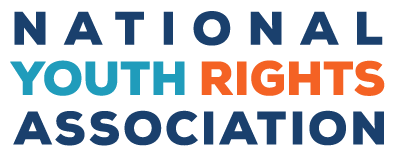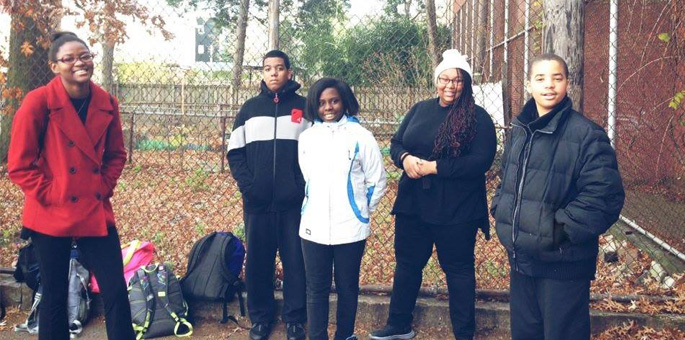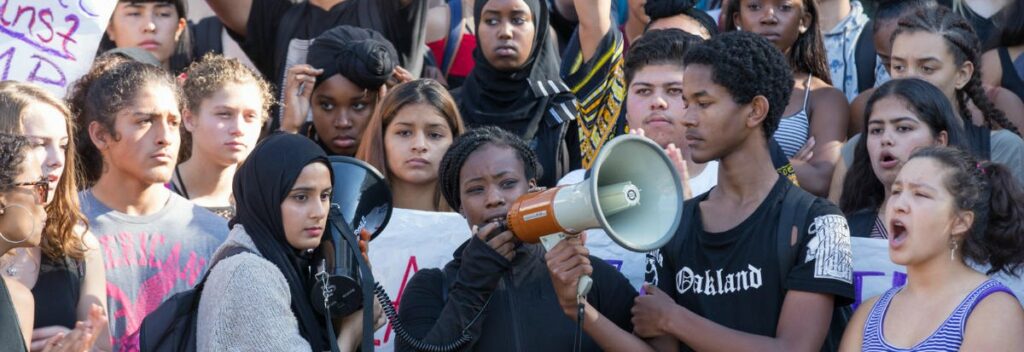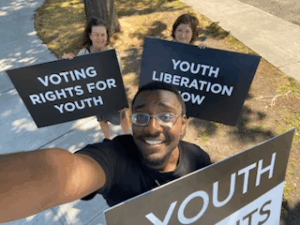One of the best ways to promote youth rights is to be active online. You can use social media to educate others about youth rights and to encourage them to take action. In fact, most people no longer get their news by reading the newspaper or consuming traditional media, but rather through articles and posts shared on websites such as Twitter, Instagram, Facebook, YouTube, or other similar platforms. You can also use online communities, such as online forums or blogs, to connect with others and build relationships with people working on similar issues.
Using Social Media
What to Post
If you have a large following on social media, it may be best to get active on your personal account instead of starting one for your chapter; but if you don’t have established social media or would be more comfortable posting on behalf of an organization you can create a new account for your chapter. You can post any newsworthy topic such as chapter or campaign milestones, media events, article written about your chapter, or some advancements about youth rights in general, or anything else significant. One of the biggest benefits of social media is how easy it is to start a discussion on a topic. Great ways to spread our message are interesting questions, polls, or simple statements that can spark a discussion in the replies or comments. Statistics and recent reports, when presented in an accessible and well-designed infographic always make for great content to share. Infographics can be made for free with Piktochart or Canva. Finally, keep in mind that social media is essentially free advertising. One viral post has the power to make international headlines in minutes. Be aware of everything you post.
What NOT to Post
Avoid getting frustrated with those in the comments section after you post. The goal of any post is to start an informative conversation, not an argument. Before posting an article or an external source, make sure the source is reliable and not clickbait. Misleading potential readers is not good for garnering support or building credibility. It is also good to avoid tangential information. Focus on what is important, and the topic at hand. Remember that posts should not be vulgar or inappropriate.
Post Frequently
It is important to consider the attention span of viewers on different platforms. If you’re not posting new content as often as other accounts, your campaign is likely to be forgotten. If you have limited time, it is probably better to post consistently on one social media platform and build up a following rather than post less in lots of different places.
Tips for Different Forms of Content
- Videos: You can make videos promoting your campaign. Speak about your campaigns beliefs and ideologies. It’s a good idea to use a decent camera, consider using a microphone, and use some form of editing software. If you want to make a video to help with your activism, it needs to be engaging all the way through to hold the audience. Make videos as short and concise as possible so viewers will watch all the way through, but don’t be afraid to make jokes or bring up other related facts to keep it entertaining.
- Text posts: Text posts are useful for asking short questions and engaging your audience. For your political campaign, you could post information about events you might be organizing with a text post. (If the social media platform you’re using does not allow for text posts, you could post a picture of text, or if you posted text on another social media platform you could screenshot the post and post the screenshot to other platforms.)Text posts can also be used through question & answers and polls on instagram and twitter.
- Live streams: Live streams are fun to do, but some people find it difficult to speak to with an audience in real time. It is a good idea to write down what you want to say or do beforehand, and have an idea of how long you’d like to speak. Additionally, feel free to engage in conversations with viewers through live stream Q & As. Facebook livestream are a good way to work with grassroots organizations.
- Commenting online: It can be useful to comment on news articles, videos, social media posts that have already garnered a large amount of attention. Online comments are most effective when they’re short and concise. Make posts with your own name and picture to build trust with the reader. Linking to credible sources to support your comments are always useful in creating engaging discourse.
- Link back to NYRA’s website: This way, anyone who comes across your post and wants to learn more about youth rights will know where to go. If you feel comfortable, feel free to offer your NYRA email or contact information to create an accessible atmosphere for those who may be new to what we do.
Contacting People on Social Media
A good way to spread your message is to find supporters with large social media followings, such as celebrities, to spread your message for you. Many people support youth rights sentiments even if they have never heard of youth rights. If an artist’s work has a message that empowers youth, it shows that they have not forgotten what it was like to be young. This is a sign that the artist may be receptive to youth rights ideals, if they do not already subscribe to them. Encouraging them to explicitly voice support for youth rights could help our movement gain exposure, and create a useful ally for your chapter or campaign.
Start out by establishing a personal connection with the celebrity. Flatter them by explaining how much you love them or their work. Then describe the advocacy that you have been involved in and how something they have said or created relates to your issue. Finally, ask them if they agree with you and tell them you’d love to have them as an ally. Their accounts may be handled by their staff, but your request will be seen by others, so it puts some pressure on them to address concerns that have a large following.
Blogs
Blogs are a good platform for anecdotes or deeper exploration of points. Having a blog, either personal or for a chapter, enables you to post multiple perspectives, share nuanced takes on current events, and frame the issue from a journalistic standpoint.
If you are using a blog post to investigate an issue in your school or community, it is important to treat anyone you interview with respect. Ask them if it’s okay to use their name or if they would prefer to remain anonymous. Make sure to either take notes of exactly what they’re saying or record the conversation. If you’re taking notes, don’t be afraid to ask them to restate what they’re saying so you don’t misquote them. If you’re recording, be sure to ask for permission first.
Online Petitions
While research has shown that online petitions aren’t very effective when trying to convince politicians, they can be a good way to spread the word in general. Some useful sites are change.org and White House petitions.








